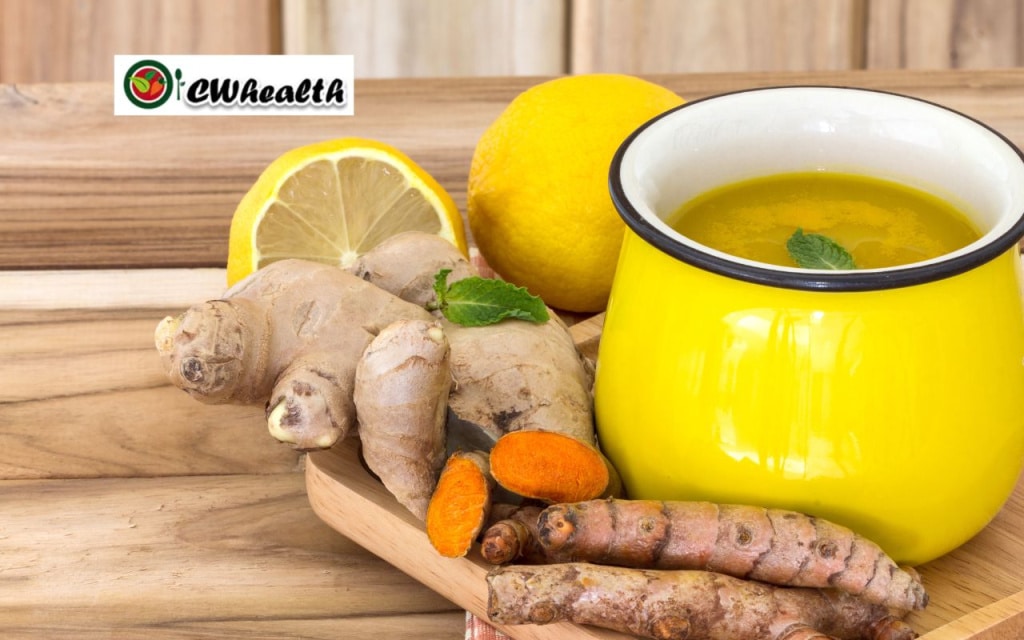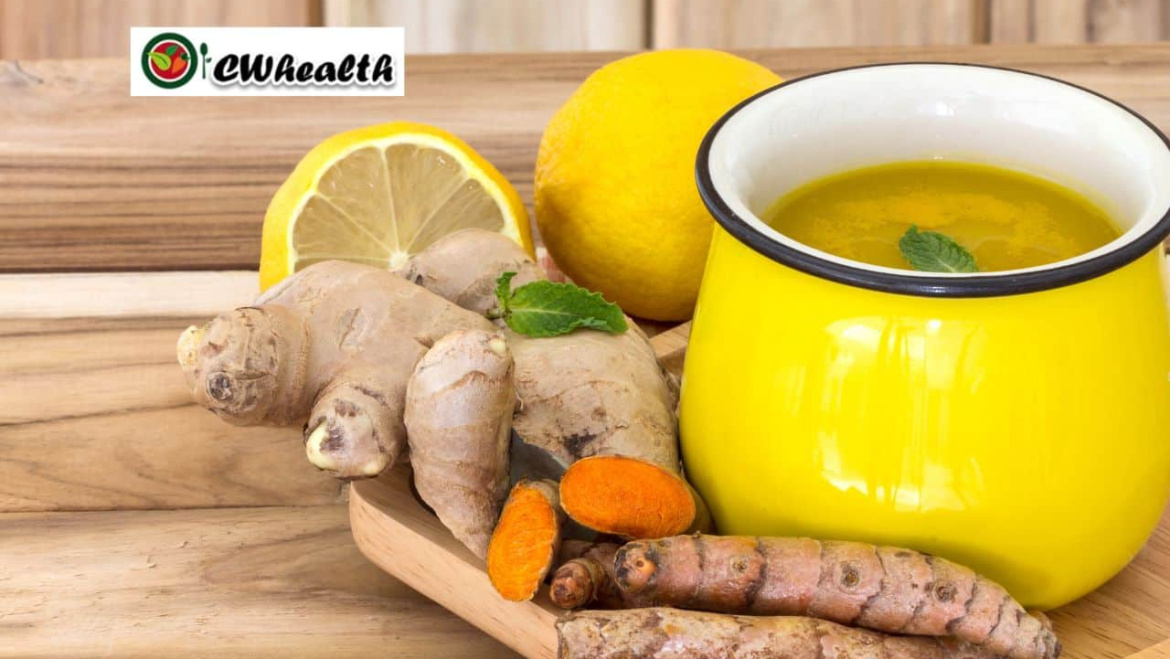Chronic inflammation is a silent yet significant factor influencing numerous health conditions, from heart disease to arthritis. By making informed dietary choices, individuals can harness the power of specific foods to reduce inflammation naturally. This guide provides insights into anti-inflammatory foods and practical eating tips designed to support a healthier, more vibrant life. Embracing these strategies not only contributes to managing existing health challenges but also promotes overall wellness and longevity. Discover how adjusting your diet can be a proactive step towards reducing inflammation and invigorating your body’s natural resilience.
Key Highlights
- Chronic inflammation contributes to aging and diseases, making anti-inflammatory diets essential for enhancing wellness and vitality.
- Incorporating foods like leafy greens, fatty fish, and berries lowers inflammation and strengthens the immune system.
- High-fiber foods like berries and whole grains help modulate inflammation by decreasing C-reactive protein levels.
- Processed foods and refined carbohydrates exacerbate inflammation, affecting heart disease and diabetes risk.
- Adopting an anti-inflammatory lifestyle combines diet, exercise, stress management, and adequate sleep for better health.
Understanding the Role of Inflammation in Overall Health
Inflammation is a natural response of the body’s immune system to injuries and infections, but when it becomes chronic, it can lead to a host of health issues. Chronic inflammation has been linked to diseases like arthritis, heart disease, and diabetes. Understanding how inflammation affects overall health is crucial for developing effective anti-aging strategies and achieving optimal wellness. By recognizing the impact of inflammation on the body, health-conscious individuals can take proactive steps to manage it through dietary choices and lifestyle changes. Let’s explore how inflammation intertwines with aging and wellness.

How Inflammation Affects Aging and Wellness
Chronic inflammation is often described as a silent contributor to aging, accelerating the deterioration of cells and tissues. This ongoing inflammatory response can compromise vitality, leading to conditions such as arthritis and cardiovascular disease that diminish quality of life. A prolonged state of inflammation plays a significant role in the aging process by increasing oxidative stress, which further damages cells. As oxidative damage and inflammation progress, they contribute to the development of a wide array of health issues, including chronic pain and disease. Addressing inflammation can profoundly enhance overall wellness. By focusing on anti-inflammatory diets, rich in fruits, vegetables, and omega-3 fatty acids, individuals can reduce their risk of chronic diseases and improve longevity. Emphasizing these nutrient-rich foods can help lower inflammation levels, alleviate joint pain, and fortify the immune system, fostering a more resilient body. Moreover, adopting holistic approaches to wellness—through stress management, regular exercise, and mindful practices—further supports reducing chronic inflammation. Therefore, embracing strategies to counteract inflammation should be an essential part of any anti-aging regimen. The intersection of nutrition and wellness suggests that small, incremental changes in daily habits not only support healthier aging but also contribute to vibrant living. With these insights, individuals are empowered to make informed choices that enhance their health and well-being, ultimately slowing the aging process and improving life quality as they grow older.
Incorporating an Anti-Inflammatory Diet for Long-Term Wellness
Reducing inflammation through diet is a cornerstone of fostering long-term health. By integrating anti-inflammatory foods and mindful eating practices, individuals can manage chronic inflammation effectively, mitigating its impact on aging and disease progression. This proactive dietary approach not only enhances daily well-being but also fortifies the body against age-related health challenges. Delving into the key components of an anti-inflammatory diet reveals how nutrition and lifestyle play crucial roles in reducing inflammation, promoting vitality, and supporting overall wellness.
Key Components of an Anti-Inflammatory Diet
An anti-inflammatory diet is designed to lower inflammation and improve health by incorporating foods that are rich in antioxidants and healthy fats. Central to this dietary approach is the inclusion of foods like olive oil, fatty fish, leafy greens, and tomatoes. Olive oil, abundant in healthy fats, serves as a potent anti-inflammatory agent, helping to reduce inflammation at the cellular level. Tomatoes, with their high lycopene content, contribute to reducing oxidative stress, preventing inflammatory responses in the body. By focusing on these anti-inflammatory foods, you not only address present inflammation but also prevent its chronic manifestation over time.
Equally important is the need to embrace lifestyle changes that complement nutritional efforts to reduce inflammation. Regular physical activity, combined with stress management techniques such as meditation, can significantly impact the body’s inflammatory markers. Physical activity promotes circulation, which allows various nutrients to reach damaged tissues more effectively, facilitating healing and reducing inflammation. Additionally, prioritizing foods high in omega-3 fatty acids supports joint health, reduces stiffness, and lessens the symptoms of chronic conditions such as arthritis.
Ultimately, an anti-inflammatory diet isn’t just about eliminating harmful foods; it’s about making informed, nutritious choices. By recognizing the role of specific dietary components, individuals are empowered to adopt an eating strategy that not only reduces inflammation but also enhances overall vitality and wellness. Integrating these dietary habits as part of your lifestyle promises not just a healthier body, but potentially a more resilient you, capable of aging gracefully and living vibrantly.
Building on the science of anti-inflammatory nutrition, here are some practical steps to seamlessly incorporate these principles into your daily routine:
- Start your day with a balanced breakfast, rich in fruits and whole grains to provide essential nutrients and fiber.
- Include a variety of colorful vegetables in your meals, aiming for at least five servings per day to maximize antioxidant intake.
- Substitute refined grains with whole grains, such as brown rice, quinoa, and whole-wheat products, which are packed with nutrients.
- Incorporate omega-3 fatty acids by adding fatty fish like salmon or plant-based sources such as flaxseeds and walnuts.
- Replace red meats with plant-based proteins or lean poultry to reduce the intake of saturated fats.
- Use olive oil or avocado oil as your primary cooking oils for a healthier fat profile.
- Limit the consumption of processed foods and sugary snacks, opting for natural alternatives like nuts and fruit.
By integrating these steps into your lifestyle, you can effectively harness the power of food to support your overall health and reduce inflammation.
The Power of Anti-Inflammatory Foods in Your Daily Routine
Incorporating anti-inflammatory foods into your daily routine can significantly impact your overall health and wellness. These nutritious choices help reduce inflammation, combat the adverse effects of chronic inflammatory conditions, and promote long-term vitality. By prioritizing foods rich in antioxidants and healthy fats, individuals can manage their health more effectively and enhance their daily well-being. Let’s delve deeper into the crucial role these foods play and explore the top options you should be including in your diet for optimal results.
Top Anti-Inflammatory Foods to Include
To effectively reduce inflammation, make anti-inflammatory foods a staple of your daily diet. Foods like leafy green vegetables, such as kale and spinach, are rich in antioxidants that combat oxidative stress, which often exacerbates inflammation. These vegetables are not only nutritious but also versatile, easily incorporated into meals like smoothies or salads. Another powerhouse in fighting inflammation is fruits, particularly berries like blueberries and strawberries. These fruits are packed with flavonoids and vitamin C that boost immune function and help reduce inflammatory markers in the body.
Olive oil is another essential component of an anti-inflammatory diet. Known for its high content of oleic acid and powerful antioxidants, it acts as a natural anti-inflammatory food, supporting heart health and lowering inflammation at a cellular level. Regularly using olive oil in cooking or dressings can deliver impressive health benefits. Similarly, tomatoes, rich in lycopene, target inflammation by reducing oxidative stress and preventing inflammatory responses. Eating these foods regularly can help you effectively manage inflammation-related conditions, improving overall health and wellness.
Don’t overlook the benefits of herbs such as turmeric and ginger. These herbs contain potent anti-inflammatory compounds like curcumin and gingerol, which have been shown to reduce inflammation and improve joint health. Incorporating these herbs into your daily routine can enhance your diet’s effectiveness in combating chronic inflammation. By using herbs in teas, meals, or supplements, you provide your body with a natural means of reducing inflammation, promoting a healthier lifestyle and boosting your well-being. Embrace these anti-inflammatory foods to support your health, fight inflammation, and enjoy a vibrant life.
Why You Should Eat More Fiber to Reduce Inflammation
Eating more fiber is a crucial strategy to reduce inflammation and enhance overall health. A high-fiber diet can aid in regulating bodily functions, improving digestion, and offering substantial protection against chronic inflammatory diseases. Incorporating fibrous foods as a part of your anti-inflammatory diet can lead to numerous benefits, including sustained energy levels and a balanced gut microbiome. Quality sources of fiber are integral for promoting longevity and vitality while supporting an individual’s journey towards healthier living. Let’s explore how choosing high-fiber foods can be a powerful method in the anti-inflammatory arsenal.

| Key Benefits | Sources of Fiber | Mechanisms | Impact on Health |
|---|---|---|---|
| Reduces inflammation markers | Whole grains | Modulates gut microbiota | Decreased risk of chronic diseases |
| Enhances immune function | Fruits and vegetables | Short-chain fatty acid production | Improved immune response |
| Improves digestion | Legumes | Increases stool bulk | Lowered digestive disorders |
| Regulates blood sugar | Nuts and seeds | Slows carbohydrate absorption | Reduced incidence of type 2 diabetes |
Benefits of Choosing High-Fiber Foods
Integrating high-fiber foods into your diet isn’t just about keeping your digestive system regular; it’s a potent intervention in your anti-inflammatory diet plan. Fiber acts as a catalyst for reducing inflammation in various ways. When you consume foods rich in fiber, like berries, legumes, and whole grains, they help modulate the body’s inflammatory response by decreasing the levels of C-reactive protein, a marker of inflammation commonly linked to chronic conditions such as heart disease and arthritis. These foods also enhance nutrient absorption and facilitate a healthier immune response by nourishing beneficial gut bacteria—a key player in reducing overall inflammation.
Moreover, fiber-rich foods provide a steady release of energy, preventing spikes in blood sugar that can lead to inflammatory reactions. A high-fiber diet can also support healthy weight management, as these foods are generally low in calories yet satisfying, keeping you full longer and reducing the likelihood of consuming pro-inflammatory high-sugar or high-fat foods. The enduring impact of fiber on health is complemented by its ability to reduce oxidative stress, another contributor to systemic inflammation. By integrating high-fiber choices into your daily meals, you’re not only working towards reducing inflammation, but also promoting a spectrum of health benefits that can have a lasting impact on your well-being and anti-aging efforts.
Avoiding Inflammatory Foods and Processed Foods
A critical element in reducing inflammation is understanding which foods contribute to it. Processed foods and common inflammatory foods can trigger proinflammatory responses, exacerbating chronic health issues. In this segment, we’ll explore these foods, revealing which to eliminate for a healthier diet and lifestyle. By recognizing and avoiding these culprits, you can significantly reduce inflammation and its associated health risks, aligning with your goals of maintaining vitality and promoting long-term health. Let’s delve into which inflammatory foods you should steer clear of to support an anti-inflammatory eating strategy.
Identifying Common Inflammatory Foods to Eliminate
In the quest to reduce inflammation and achieve optimal health, it’s essential to pinpoint which common foods contribute to this chronic condition. Processed foods are often at the top of the list due to their high content of unhealthy fats, added sugars, and artificial ingredients. These elements are known to trigger inflammatory responses in the body, exacerbating conditions like heart disease and diabetes. Moreover, diets high in processed foods are typically low in nutrient density, depriving the body of essential vitamins and minerals necessary for combating inflammation and supporting overall health.
Proinflammatory diets often include foods such as refined carbohydrates, like white bread and pastries, which can lead to spikes in blood sugar and subsequently, inflammation. Fried foods and excessive intake of red meat, particularly those rich in saturated fats, also play a significant role in heightening inflammation. These food choices, often staples of Western diets, can contribute to obesity, another factor closely linked to increased inflammatory markers and chronic conditions. By eliminating or significantly reducing these inflammatory foods, you can take a proactive step towards better health and weight management.
To effectively transition away from a proinflammatory diet, consider replacing these unhealthy choices with anti-inflammatory alternatives. Opt for whole foods that are rich in antioxidants and omega-3 fatty acids, like fatty fish, nuts, and a variety of colorful fruits and vegetables. These foods not only help reduce inflammation but also promote a more balanced and healthful approach to eating. By making these dietary changes, you align with a strategy that supports reducing inflammation naturally, enhancing your body’s ability to maintain health and vitality over the long term.
Adopting an Anti-Inflammatory Lifestyle
Embracing an anti-inflammatory lifestyle isn’t just about changing what you eat—it’s a comprehensive approach to enhancing your overall well-being and reducing the risk of chronic inflammation. By understanding the interplay between your diet, daily habits, and long-term health, you can make informed choices that support vitality and longevity. This lifestyle encompasses selecting anti-inflammatory foods, making mindful lifestyle changes, and nurturing your body with holistic strategies. Let’s explore how to naturally reduce inflammation in the body for a healthier, more vibrant life.
Strategies to Naturally Reduce Inflammation in the Body
Living an anti-inflammatory lifestyle is all about conscious choices that contribute to reducing inflammation and fostering overall health. Start with a diet rich in anti-inflammatory foods, such as leafy greens, fatty fish, and berries, which are packed with antioxidants and omega-3 fatty acids. These nutritional powerhouses work to diminish chronic inflammation, a precursor to many diseases. By incorporating these foods consistently, you strengthen your body’s natural defenses and reduce your risk of developing inflammation-related conditions, like arthritis and heart disease, thereby promoting a holistic approach to health.
Beyond diet, consider incorporating lifestyle modifications that complement your nutritional efforts. Regular physical activity is crucial; it improves circulation and helps manage weight, both of which play roles in managing inflammation. Engage in activities that you enjoy, whether it’s yoga, brisk walking, or swimming, as these can significantly benefit your overall well-being. Moreover, managing stress through techniques like meditation or deep-breathing exercises is essential. Chronic stress elevates inflammation, so by finding effective ways to reduce stress, you further support your body’s health naturally.
Lastly, adopting a consistent sleep schedule and ensuring adequate rest is vital in reducing inflammation. Sleep is restorative, and during deep sleep, your body performs crucial repair processes, lessening inflammatory markers. As part of a comprehensive anti-inflammatory lifestyle, striking a balance in these areas enhances your body’s resilience against inflammation. Whether you’re managing your diet, physical activity, stress, or rest, these strategies offer a collective approach to optimizing health and preventing chronic inflammation. By living mindfully and intentionally, you’re paving the way for a healthier future while enjoying the present vibrantly.
Tips for Sustainable and Healthy Eating Habits
Developing sustainable and healthy eating habits is key to efficiently reducing inflammation while nurturing long-term health benefits. Start by focusing on incorporating whole foods into your diet—these are rich in nutrients that effectively reduce inflammation and promote vitality. Prioritize eating a variety of colorful fruits and vegetables, which provide antioxidants that combat oxidative stress, a significant contributor to chronic inflammation. By consistently including these foods in your daily meals, you’re setting the foundation for a diet that both supports weight management and nurtures overall health.
It’s essential to adopt mindful eating practices. This entails taking time to relish your meals, acknowledging the flavors, and focusing on hunger and fullness cues. Such habits can help you avoid overeating and make more informed choices, reducing reliance on processed foods that often spike inflammation levels. Instead, incorporate anti-inflammatory nutrients from sources like omega-3-rich fatty fish, nuts, and olive oil, known for their heart health benefits and ability to lower chronic inflammation markers significantly.
Establishing these healthy eating habits can lead to sustainable weight management, crucial for patients with conditions aggravated by inflammation, such as those seeking bariatric interventions. Transitioning to a diet filled with anti-inflammatory foods isn’t just beneficial for reducing inflammation; it’s an integral part of promoting sustainable health. By embracing these strategies, you’re aligning with a proactive approach that bolsters your body’s resilience against chronic health issues, ensuring a path to longevity, vitality, and well-being.
Incorporating anti-inflammatory foods into your daily diet can be a powerful way to enhance your overall well-being and longevity. By choosing nutrient-rich fruits, vegetables, whole grains, and healthy fats like omega-3-rich fish and nuts, you support your body’s natural ability to combat inflammation. Consistently applying these dietary changes not only helps reduce inflammation but also promotes long-term vitality and may slow the aging process. Embrace these dietary strategies to empower your health journey, and explore additional resources that CW Health offers for personalized, holistic wellness solutions tailored to your needs.
What is chronic inflammation and how does it affect health?
Chronic inflammation is a prolonged inflammatory response that can lead to various health issues like arthritis, heart disease, and diabetes. It accelerates cell deterioration and affects overall vitality by increasing oxidative stress in the body.
How can an anti-inflammatory diet contribute to wellness and longevity?
An anti-inflammatory diet reduces the risk of chronic diseases, lowers inflammation levels, and can alleviate joint pain. It includes foods high in antioxidants and omega-3 fatty acids, promoting a resilient body and enhancing longevity.
Which foods are considered anti-inflammatory and should be included in my diet?
Foods such as leafy greens, fatty fish, berries, olive oil, and tomatoes are considered anti-inflammatory. They provide antioxidants, healthy fats, and nutrients essential for reducing inflammation and supporting health.
What lifestyle changes can complement an anti-inflammatory diet?
In addition to dietary changes, incorporating regular exercise, stress management techniques like meditation, and ensuring adequate sleep are crucial. These efforts collectively help reduce inflammation and improve overall wellness.
What foods should I avoid to prevent increasing inflammation levels?
Steer clear of processed foods, refined carbohydrates, fried foods, and excessive red meat. These items are high in unhealthy fats and sugars, which can trigger inflammatory responses in the body.





Add Comment